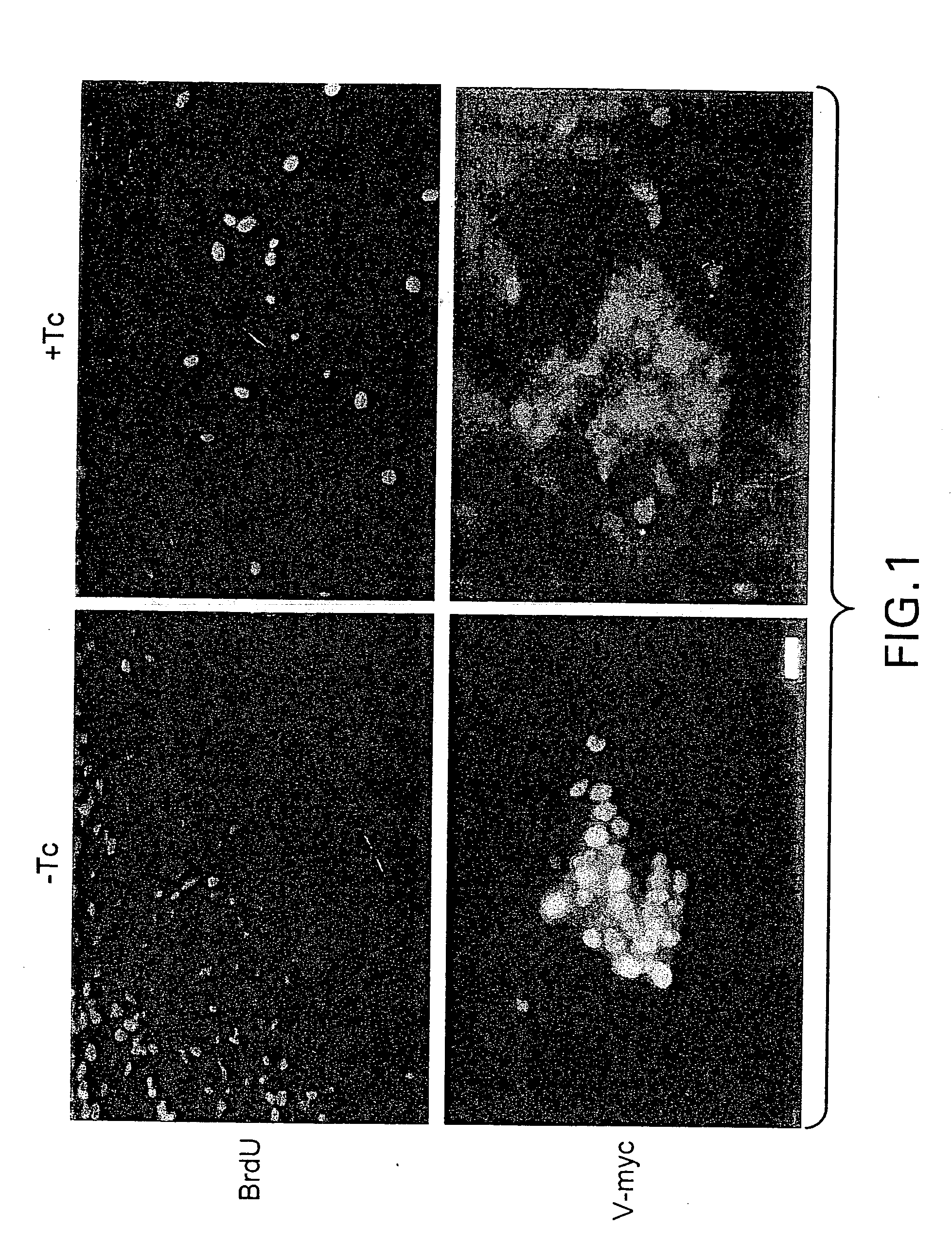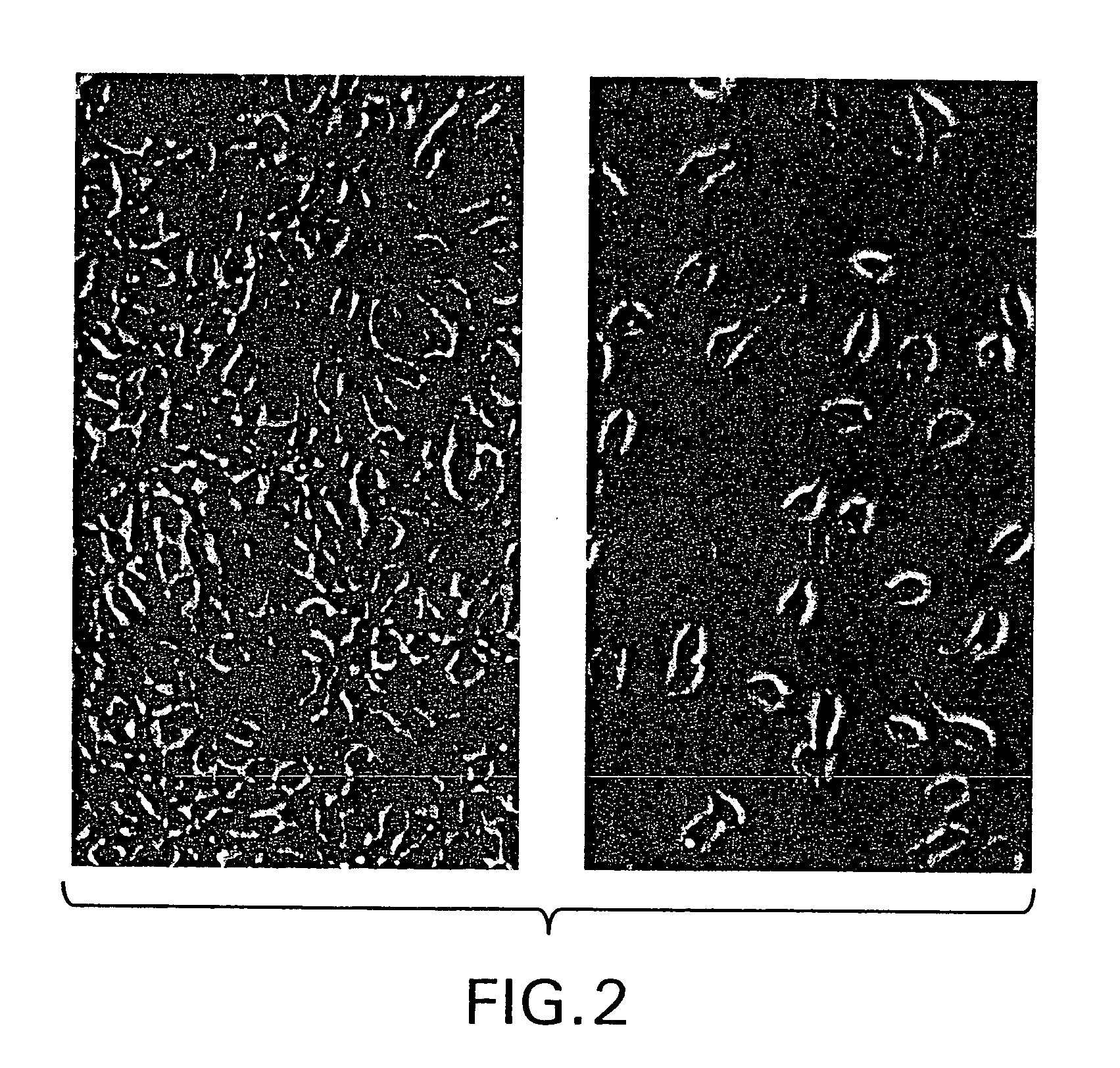Human CNS cell lines and methods of use therefor
a technology of human cns and cell lines, which is applied in the field of cns cell lines, can solve the problems of affecting the development of central nervous system (cns) disorders, difficult to obtain human cns tissue, and limited life span of cultures, and achieve the effect of promoting expression of the growth-promoting gen
- Summary
- Abstract
- Description
- Claims
- Application Information
AI Technical Summary
Benefits of technology
Problems solved by technology
Method used
Image
Examples
example 1
5 Preparation and Characterization of Human CNS Progenitor Cell Lines
[0072] This Example illustrates the preparation of a representative conditionally-immortalized human CNS progenitor cell line.
[0073] A. Primary Cell Culture
[0074] Proliferating primary cultures of human fetal CNS progenitor cells were established from whole human fetal brain tissue of 13 weeks gestational age, which was obtained through Advanced Bioscience Resources, Inc. (Alameda, Calif.). The tissue was procured in compliance with state and federal laws and regulations, including those set forth by the Uniformed Anatomical Gift Act and National Organ Transplant Act, and appropriate consent forms were used. Brain tissue fragments were kept for approximately 24 hours at 4° C. in Hank's balanced salt solution (with no calcium or magnesium) containing penicillin (50 I.U. / mL) and streptomycin (50 μg / mL) before dissociation.
[0075] The tissue was dissociated enzymatically and maintained in culture for 5 days before ...
example 2
Differentiation of Human CNS Progenitor Cell Lines
[0083] This Example illustrates the preparation of differentiated CNS cells from the human CNS progenitor cell line described in Example 1, and the characterization of the differentiated cells.
[0084] A. Differentiation of Immortalized Cultures
[0085] To differentiate the immortalized cells, cultures (clone B4, described below) were switched to DMEM / F12 containing N2 supplements and tetracycline (1 μg / mL to suppress transcription of the oncogene). After approximately 7 days of tet addition (tet+RA for 1 day, followed by tet, high K+, NT-3 and BDNF for 6 days) neuronal and glial morphological differentiation occurred (FIG. 2, right panel). Phase-bright cells with long, thin processes were present (suggestive of neuronal morphology), as well as larger phase-dark cells with wider processes (suggestive of astrocyte morphology). In the proliferative growth condition (FIG. 2, left panel), cells exhibited progenitor cell morphology (small ...
example 3
Preparation and Characterization of Clonal Human CNS Progenitor Cell Lines
[0095] This Example illustrates the generation of clonal human CNS progenitor cell lines, and the characterization of such cell lines.
[0096] A. Isolation of Clonal Cell Lines
[0097] Clones were isolated from the human CNS progenitor cell line described in Example 1 by limit dilution in 96-well plates. Clones were fed and passaged as above. Of the distinct clonal cell lines generated, four are described in detail below and are referred to herein as clones B4, C2, E5 and C10.
[0098] EGF and PDGF Enhance Proliferation Rate and Cell Survival. To facilitate the expansion of the human CNS clones, we identified factors that increase the proliferation rate and / or cell survival. To examine the effects of EGF and PDGF on the proliferation and survival of the human CNS clones, 40 ng / mL EGF, 20 ng / mL PDGF or both were added to the standard growth medium, which already contained FGF-2 and 50% CM, and total cell number an...
PUM
| Property | Measurement | Unit |
|---|---|---|
| non-permissive temperature | aaaaa | aaaaa |
| voltage-dependent sodium current | aaaaa | aaaaa |
| ligand-gated currents | aaaaa | aaaaa |
Abstract
Description
Claims
Application Information
 Login to View More
Login to View More - R&D
- Intellectual Property
- Life Sciences
- Materials
- Tech Scout
- Unparalleled Data Quality
- Higher Quality Content
- 60% Fewer Hallucinations
Browse by: Latest US Patents, China's latest patents, Technical Efficacy Thesaurus, Application Domain, Technology Topic, Popular Technical Reports.
© 2025 PatSnap. All rights reserved.Legal|Privacy policy|Modern Slavery Act Transparency Statement|Sitemap|About US| Contact US: help@patsnap.com



